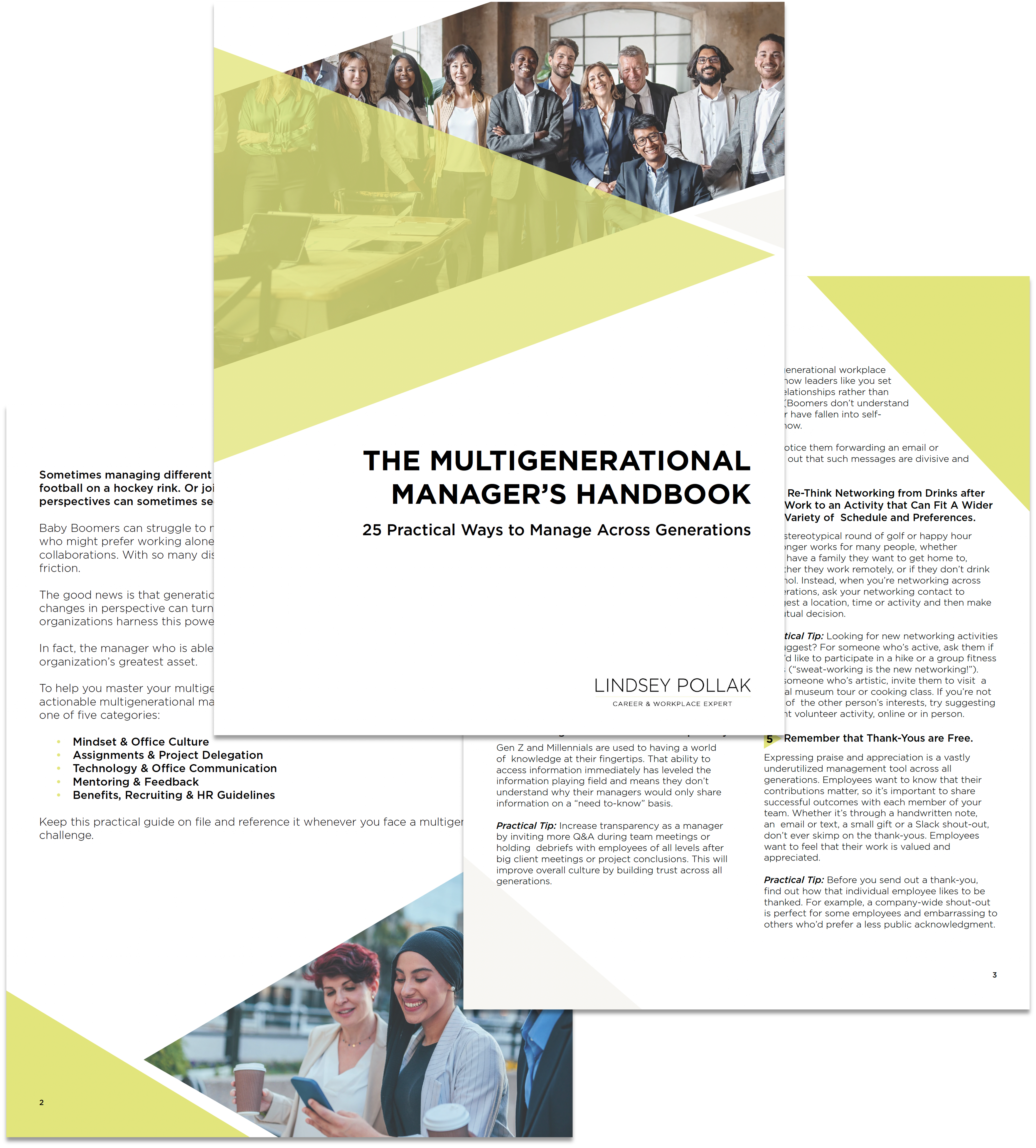“But we were on a break!”
(“Friends” references cross the generational divide, right?) Ross may have been talking about a relationship break, but I want to talk about career breaks – when employees leave for another company or a personal life event.
Today, most employers realize that job-hopping employees are a fact of life. The 2016 Deloitte Global Millennial Survey found that 44 percent of millennials plan to change jobs within the next two years.
But what should leaders do when your highest performers leave for what they perceive as greener pastures? Instead of mourning the loss, consider that you might not be losing them forever. Companies are increasingly seeing the benefit of hiring back so-called “boomerang employees.”
As you’ll read below, boomerangs can bring a lot of benefits to an organization. Consider how to stay in touch with top talent while they are “on a break” in hopes they’ll come back — reinvested, reinvigorated and ready to contribute again.
A Smooth Exit Paves the Way for Re-Entry
“One of the most effective tools to increase the odds of re-hiring a high performer returning from career break is by conducting well-crafted exit interviews and skillful post-employment follow-up. Employers who make the exit interview a meaningful experience and offer a concrete means of maintaining a close connection once the employee has left are sending a strong message to employees departing for career breaks. The employee can be conflicted about leaving the company and concerned about whether she’s burned a bridge–or whether a future career remains possible. The exit interview provides an opportunity to reassure the employee that the relationship with the company will continue, and that the employer remains invested.” — Read more at Harvard Business Review.
Reduce Risks with Boomerang Employees
“Many organizations consider these boomerang employees as a known entity, both with the skills they have and that they are a fit with the culture. ‘Boomerangs are about as close to no risk as companies can get,’ says [chief people officer at Kronos, Dave] Almeda. In some cases, he notes, boomerangs who’ve left your business for a competitor and then returned, or those who left to take a consulting role can bring back valuable industry information.” — Read more at CIO.com.
Boomerang Employees Can Prove the Grass Isn’t Greener
“Another unanticipated benefit that is often overlooked is the morale boost that these employees can provide to their colleagues. If a strong performer left, especially for an opportunity they couldn’t pass up, and then boomerangs back, co-workers who may have had leaving in the back of their own mind might stop and say, ‘Look at what she or he went through. Maybe it’s not that great out there after all.’” — Read more at Society for Human Resource Management.
Why Corporate Alumni Networks May Be Your New Favorite Recruiting Tool
“You may be thinking you need to manage another talent community like you need another form to fill out. However, there are significant benefits to creating these networks — so long as you have the resources to manage them effectively. [These include]: continued rapport and connection with former employees; the ability to disseminate hiring opportunities to a network of people you already know and who understand what makes for a successful hire in your organization; and creating a proprietary place for former employees to connect, share ideas and rally around your company.” — Read more at The Aristocracy of HR.
Use These Best Practices for Staying in Touch with Boomerangs
“Nearly half of managers say their organization has no alumni communications strategy. HR practitioners, on the other hand, say they use several strategies for keeping in touch with former high-performing employees, including email newsletters (45 percent), recruiters (30 percent), and alumni groups (27 percent). Facebook is the platform of choice for alumni groups according to HR professionals (42 percent), with email (39 percent) and LinkedIn (33 percent) close behind.” — Read more at HuffingtonPost.com.
Do you try to keep in touch with past employees, or have you hired a boomeranger? I’d love to hear your experience in the comments below!
Lindsey Pollak is the leading voice on millennials in the workplace, trusted by global companies, universities, the world’s top media outlets — and, most importantly, by millennials themselves. A New York Times bestselling author, Lindsey began her career as a dorm RA in college and has been mentoring millennials — and explaining them to other generations — ever since. Her keynote speeches have audiences so engaged that, in the words of one attendee, “I didn’t check my phone once!” Contact Lindsey to discuss a speaking engagement for your organization.

